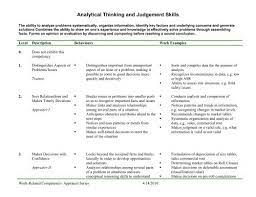Title: A Real-Life Example of Data-Driven Decision Making
Introduction:
In today’s data-rich world, businesses and organizations are increasingly relying on data-driven decision making to gain valuable insights and make informed choices. This approach involves using data analysis and interpretation to guide decision-making processes. To illustrate the power of data-driven decision making, let’s explore a real-life example that highlights its effectiveness.
The Case Study: Optimizing Online Advertising Campaigns
Imagine a digital marketing agency responsible for managing online advertising campaigns for a diverse range of clients. The agency faced the challenge of maximizing the return on investment (ROI) for their clients’ ad spend. They needed to identify the most effective strategies for targeting audiences and allocating advertising budgets.
Step 1: Setting Objectives
To begin, the agency defined clear objectives for their campaigns, such as increasing click-through rates (CTR), conversion rates, and ultimately generating higher revenue for their clients. These objectives served as benchmarks against which they could measure success.
Step 2: Gathering Data
Next, the agency collected vast amounts of data from various sources, including ad platforms, website analytics, customer behavior tracking tools, and market research reports. They captured information about audience demographics, ad impressions, clicks, conversions, and other relevant metrics.
Step 3: Analyzing Data
With an abundance of data at their disposal, the agency used statistical analysis techniques and visualization tools to uncover patterns and trends. They examined correlations between different variables such as ad placement, targeting parameters (age group, location), time of day or week, and performance metrics like CTR or conversion rates.
Step 4: Identifying Insights
Through thorough analysis, the agency discovered that certain demographics responded better to specific types of ads. For instance, they found that younger audiences were more likely to engage with video ads displayed on mobile devices during evenings and weekends. Conversely, older audiences preferred static image ads shown on desktops during weekdays.
Step 5: Implementing Changes
Armed with these valuable insights, the agency made data-driven decisions to optimize their clients’ ad campaigns. They adjusted targeting parameters, allocated budgets more effectively across platforms and ad formats, and optimized ad creatives to align with the preferences of different target audiences.
Step 6: Monitoring and Iterating
The agency continuously monitored the performance of their revised campaigns. They tracked key metrics in real-time and used A/B testing to compare different strategies or variations. By analyzing ongoing data, they could quickly identify what worked best and make further adjustments to maximize ROI.
Results:
Thanks to their data-driven decision making approach, the digital marketing agency achieved remarkable results for their clients. The optimized campaigns consistently outperformed previous efforts, resulting in higher CTRs, increased conversions, and ultimately improved revenue generation. The agency’s ability to adapt quickly based on real-time data insights led to enhanced client satisfaction and long-term business growth.
Conclusion:
This real-life example demonstrates how data-driven decision making can empower businesses and organizations across various industries. By leveraging accurate and relevant data, organizations can gain valuable insights that inform strategic choices and drive success. Whether it’s optimizing advertising campaigns or making critical business decisions, embracing a data-driven approach can lead to improved outcomes, enhanced efficiency, and a competitive edge in today’s fast-paced world.
Frequently Asked Questions About Data-Driven Decision Making in Healthcare and its Application
- What is data driven decision making in healthcare?
- Which of the following is not an example of data driven decision making?
- What is meant by data based decision making?
- How do you use data to drive decision making?
What is data driven decision making in healthcare?
Data-driven decision making in healthcare refers to the process of using relevant and reliable data to inform and guide decision-making processes within the healthcare industry. It involves collecting, analyzing, and interpreting data from various sources to gain insights that can influence healthcare policies, strategies, and patient care.
In healthcare, data-driven decision making is crucial as it enables healthcare providers, administrators, and policymakers to make informed choices based on evidence rather than relying solely on intuition or past experiences. By leveraging data, healthcare professionals can identify patterns, trends, and correlations that can lead to improved outcomes in patient care, operational efficiency, resource allocation, and overall quality improvement.
Here are some key aspects of data-driven decision making in healthcare:
- Patient Outcomes: Data-driven decision making allows healthcare providers to monitor patient outcomes more effectively. By analyzing clinical data such as treatment protocols, patient demographics, medical histories, and outcomes over time, providers can identify best practices and make evidence-based decisions for individual patients or populations.
- Quality Improvement: Data analysis plays a vital role in identifying areas for quality improvement within healthcare systems. By examining patient safety incidents, adverse events, readmission rates, infection rates, or medication errors through robust data analysis techniques, organizations can pinpoint areas that require intervention or process optimization.
- Resource Allocation: Healthcare systems often face resource constraints. Data-driven decision making helps optimize resource allocation by analyzing factors such as patient volume patterns across different departments or facilities. This allows administrators to allocate resources efficiently based on demand forecasts and historical utilization patterns.
- Population Health Management: Data-driven approaches are instrumental in managing population health by identifying high-risk groups or individuals who may benefit from preventive interventions or targeted care management programs. Analyzing population health data helps identify social determinants of health and design interventions that address specific needs.
- Research and Innovation: Data-driven decision making fuels research advancements by providing researchers with access to large datasets for analysis. Research institutions can use data to identify trends, develop hypotheses, and design studies that contribute to medical knowledge and innovation.
- Policy and Regulation: Policymakers and regulators rely on data-driven insights to shape healthcare policies, regulations, and guidelines. Data analysis helps evaluate the impact of existing policies, identify gaps in care delivery, and inform evidence-based decision making in healthcare policy development.
In summary, data-driven decision making in healthcare leverages the power of data analysis to drive improvements in patient care, resource allocation, quality improvement, population health management, research, innovation, and policy development. By harnessing the potential of data analytics, healthcare systems can achieve better outcomes and enhance the overall delivery of care.
Which of the following is not an example of data driven decision making?
Choosing a decision based on personal intuition or gut feeling is not an example of data-driven decision making.
What is meant by data based decision making?
Data-based decision making refers to the process of using data and information to inform and guide the decision-making process. It involves collecting, analyzing, and interpreting relevant data in order to make informed choices or solve problems. Rather than relying solely on intuition or personal judgment, data-based decision making emphasizes the use of objective information to support and validate decisions.
In this approach, data is collected from various sources, such as surveys, research studies, customer feedback, market trends, or internal company data. This data is then analyzed using statistical techniques, visualization tools, or other analytical methods to identify patterns, trends, correlations, or insights.
By leveraging data-driven insights, decision makers can gain a deeper understanding of the situation at hand and make more informed choices. Data-based decision making helps mitigate biases and subjective opinions that can often cloud judgment. It allows decision makers to rely on evidence-based information to assess risks, evaluate alternatives, forecast outcomes, and measure performance.
Data-based decision making is commonly used across industries and sectors. It plays a crucial role in areas such as business strategy development, marketing campaigns analysis and optimization, product development decisions, resource allocation planning, risk assessment and management, operational efficiency improvements, and much more.
Overall, data-based decision making empowers organizations to make evidence-backed choices that are more likely to lead to successful outcomes while minimizing uncertainties and increasing overall effectiveness.
How do you use data to drive decision making?
Using data to drive decision making involves a systematic approach that incorporates data collection, analysis, interpretation, and application. Here’s a step-by-step guide on how to effectively use data for decision making:
- Clearly Define Objectives: Start by clearly defining the objectives or goals you want to achieve through your decision-making process. This provides a framework for what data you need to collect and analyze.
- Identify Relevant Data Sources: Determine which data sources are relevant to your objectives. This may include internal sources such as sales records, customer feedback, or operational data, as well as external sources like market research reports or industry benchmarks.
- Gather and Organize Data: Collect the necessary data from identified sources and ensure it is properly organized for analysis. This may involve cleaning and formatting the data to remove errors or inconsistencies.
- Analyze the Data: Apply statistical techniques and analytical tools to extract meaningful insights from the collected data. Look for patterns, correlations, trends, or anomalies that can provide valuable information related to your objectives.
- Interpret Findings: Once you have analyzed the data, interpret the findings in the context of your objectives. Identify key insights and understand their implications for decision making.
- Make Informed Decisions: Use the insights gained from data analysis as inputs for making informed decisions. Consider both quantitative results and qualitative factors when weighing options.
- Monitor and Evaluate: Implement the decisions made based on data-driven insights and continuously monitor their impact. Track relevant metrics or KPIs to assess whether desired outcomes are being achieved.
- Iterate and Improve: Based on ongoing monitoring and evaluation, make adjustments if necessary. Continuously refine your decision-making processes based on new data insights and feedback loops.
Key Considerations:
– Ensure Data Quality: The accuracy, completeness, and reliability of your data are crucial for effective decision making.
– Contextualize Data: Understand the limitations of your data by considering factors such as sample size, biases, or potential confounding variables.
– Involve Stakeholders: Engage relevant stakeholders in the decision-making process to ensure diverse perspectives and buy-in.
– Balance Data with Experience: While data is valuable, it should be complemented with experience, expertise, and domain knowledge to make well-rounded decisions.
By following these steps and incorporating data-driven insights into your decision-making process, you can enhance the accuracy, efficiency, and effectiveness of your decisions while minimizing risks and uncertainties.




